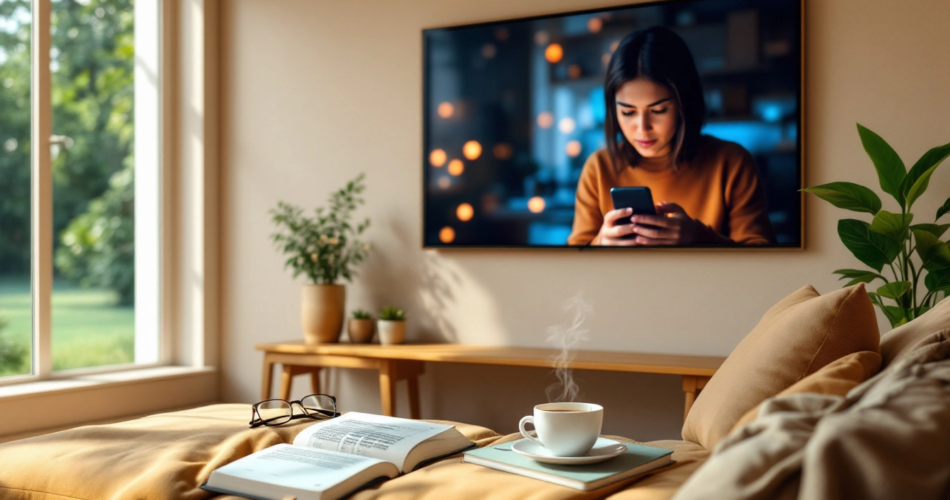In today’s fast-paced, digitally driven world, our screens are demanding more of our time than ever before. From working on computers to binge-watching TV shows and endlessly scrolling on smartphones, excessive screen time has quietly become a challenge to our mental and cognitive well-being. But what if reclaiming control over screen usage could save your brain? Implementing tips for screen time reduction is not just about cutting screen time—it’s about giving your brain the care it deserves. In this article, we’ll explore practical strategies to reduce screen time and why doing so is crucial for your overall brain health.
Table of Contents
- Why Reducing Screen Time Is Vital for Brain Health
- Habits to Help Cut Down Screen Time
- Setting Technology Boundaries
- Screen-Free Activities to Replace Digital Time
- Monitoring and Adjusting Progress
- FAQs
- Conclusion
Why Reducing Screen Time Is Vital for Brain Health
Excessive screen time doesn’t just strain your eyes—it deeply impacts your brain’s cognitive function, memory, and focus.
How Screen Time Affects Cognitive Function
Numerous studies highlight the negative effects of prolonged screen usage on brain health. Continuous screen exposure overstimulates the brain, making it harder to focus, retain information, and think critically. A study by neuroscientists (source) found strong links between excessive screen exposure and reduced gray matter density in areas of the brain responsible for executive function and impulse control.
The Impact on Mental Health
Screen time isn’t harmless when it comes to mental well-being. Research from Mental Health Foundation indicates a correlation between excessive digital consumption and heightened levels of anxiety, depression, and insomnia. Dopamine hits from “likes” and notifications create digital addictions, leaving long-term mental health consequences behind.
Habits to Help Cut Down Screen Time
Develop strong habits to regain control of your screen use and create a healthier relationship with technology.
Track Your Usage Regularly
The first step toward cutting down screen time is understanding how much you’re using your devices. Use tools like digital wellness apps or in-built features such as Screen Time for iOS or Digital Wellbeing for Android to monitor your habits. Awareness is the foundation of change.
Create a Screen-Free Morning Routine
Starting your day without screens can set a positive tone. Replace scrolling through social media with activities like stretching, journaling, or enjoying breakfast mindfully. A screen-free morning gives your brain time to wake up naturally without unnecessary digital stimulation.
Setting Technology Boundaries
Proactively setting rules for screen use ensures a healthy balance between digital and offline life.
Designate “No-Screen Zones” at Home
Identify places in your home that should stay screen-free, such as bedrooms, dining areas, and bathrooms. For example, keeping your phone away from the dinner table encourages meaningful family conversations.
Use “Tech-Free” Time Blocks
Block out specific times in the day where all devices are turned off. The Pomodoro technique can be a great way to enforce focus and encourage regular breaks from your devices.
Screen-Free Activities to Replace Digital Time
Discover enriching offline activities that reduce your reliance on screens while boosting your creativity and well-being.
Explore Hobbies and Creative Outlets
Diversify your time with screen-free hobbies like painting, knitting, gardening, or writing. This not only nurtures your mind but also allows you to develop fun new skills.
Spend Time Outdoors
Embrace nature and gain mental clarity. Research (source) highlights how spending time in green spaces lowers cortisol levels and improves mood, leading to better brain function and emotional well-being.
Monitoring and Adjusting Progress
Stay accountable and embrace flexibility as you form sustainable habits to keep your screen time reduction journey on track.
Reflect on Your Screen Time Goals
Assess whether you’re reducing screen time effectively. For example, compare your weekly screen time reports and take note of how these adjustments improve your mood, focus, or mental energy.
Celebrate Milestones
Reaching your screen time goals deserves recognition! Celebrate milestones with non-digital treats like a spa day, hiking adventure, or trying a new unplugged activity with friends and loved ones.
Frequently Asked Questions
What are the long-term effects of excessive screen time on the brain?
Long-term effects include reduced memory retention, cognitive fatigue, poor impulse control, and higher risks of mood disorders like anxiety and depression.
How can I help my children follow tips for screen time reduction?
Set clear boundaries like tech-free zones, engage them in fun offline activities, and lead by example by reducing your own screen time.
Are there tools or apps to assist in reducing screen time?
Yes, tools like Freedom, RescueTime, and Screentime by Apple can help track and limit device usage effectively.
Is it okay to have screen-free evenings only?
Absolutely! Screen-free evenings are a great starting point and can lead to improved sleep quality and better familial connections.
What are some easy hobbies to try for beginners to reduce screen time?
Reading, journaling, cooking, or starting a small garden are simple, fulfilling hobbies that are perfect for beginners.
Conclusion
Reducing screen time isn’t just about limiting your time on devices—it’s about reclaiming your mental focus, improving your productivity, and protecting your brain health. From setting boundaries like “no-screen zones” to exploring rewarding offline activities, these tips for screen time reduction can set you on the path to a healthier, more balanced life. Start implementing these strategies today and give your brain the break it truly needs!



Your enthusiasm for this subject is infectious, I’m motivated to learn more.